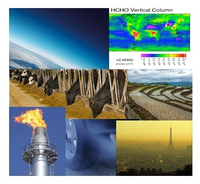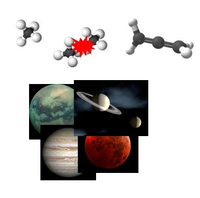Research Unit Lasers and Spectroscopies
The Research Unit Laser and Spectroscopies (LLS) combines the efforts of mainly physicists, as well as chemists and engineers to carry out fundamental and applied research. The LLS is part of the research institutes ILEE, NISM, NARILIS and NAXYS. He collaborates with other teams at the University of Namur and carries out both experimental and theoretical research activities.
For the experimental part, the LLS develops, within the framework of research projects, various original "home-made" instruments. Most of these equipments, like commercial instruments, belong to the LOS technological platform.
A solid international reputation has been built over the years, thanks to the originality and excellence of the research carried out in very specific niches, in collaboration with many external laboratories, mainly abroad (France, USA...).
The LLS researches cover three main themes:
- Optical characterization of surfaces and interfaces
- Study of molecules in very low concentration ("pollutants") in the gas phase (Muriel Lepère)
- Quantum study of light
Study of molecules in very low concentration ("pollutants") in the gas phase
The understanding of atmospheric physico-chemical processes is a growing concern in our industrialized society that have to deal with global climate changes such as global warming or urban pollution as well as health problems such as the increase in the incidence of diseases such asthma or lung cancer. Progress in atmospheric science requires precise knowledge of the concentrations of many pollutants and their spatial and temporal evolution, which requires themselves very precise knowledge of spectroscopic properties of gases.
 High-resolution molecular spectroscopy is a powerful tool for the quantitative study of gas mixtures, for both the fundamental understanding of intra- and inter-molecular interactions and environmental and health studies. Within this framework, the LLS carries out both experimental and theoretical research. Measurements are realized by laser-based spectrometers, with many “home-made” equipment, while the modeling of observed phenomena is performed using semi-classical or quantum theories. The study of line shape parameters such as individual line intensities, pressure-induced broadenings and collisional shifts, spectral profiles and line mixing parameters is carried out for many molecules in gas phase. The evolution of these parameters with temperature is also studied since it is essential both from a fundamental and applied point of view (studies of "cold" or "hot" planets, residual combustion gases, smoke ...).
High-resolution molecular spectroscopy is a powerful tool for the quantitative study of gas mixtures, for both the fundamental understanding of intra- and inter-molecular interactions and environmental and health studies. Within this framework, the LLS carries out both experimental and theoretical research. Measurements are realized by laser-based spectrometers, with many “home-made” equipment, while the modeling of observed phenomena is performed using semi-classical or quantum theories. The study of line shape parameters such as individual line intensities, pressure-induced broadenings and collisional shifts, spectral profiles and line mixing parameters is carried out for many molecules in gas phase. The evolution of these parameters with temperature is also studied since it is essential both from a fundamental and applied point of view (studies of "cold" or "hot" planets, residual combustion gases, smoke ...).









